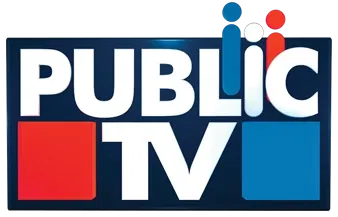WASHINGTON DC: Months after averting it, the US is again standing at the brink of total shutdown, if Congress — struggling with the dispute between Democrats and Republicans — is not able to pass the spending bills before October 1, The Hill reported.
Notably, this comes just months after the Democrats and Republicans reached an agreement over extending the debt ceiling, saving the US from entering into default.
The US Congress and the Biden administration have until September 30 to avoid a government shutdown. That’s when the federal fiscal year ends, and the 2024 fiscal year begins October 1, according to The Washington Post.
But, the senators are already offering a preview of what is sure to be a major blame game in Congress this month should lawmakers fail to prevent a lapse in funding.
Senate Majority Leader Chuck Schumer (D-N.Y.) said in a letter to his Democratic colleagues earlier this month that a shutdown would be the fault of “political games” by House Republicans.
“When the Senate returns next week, our focus will be on funding the government and preventing House Republican extremists from forcing a government shutdown,” the Hill quoted Schumer stating in the letter.
The hard-line conservative House Freedom Caucus last month vowed to vote against any government funding bill, including a stopgap measure, that doesn’t include a list of GOP policy priorities.
Some House conservatives have gone even further to dial up the pressure by threatening a shutdown and downplaying the potential consequences, prompting uneasiness among Democrats and, in some cases, Republicans wary of a funding lapse, The Hill reported.
The standoff is beginning to inflict pain on Americans, whose lives are affected, in one way or another, by the federal government.
Meanwhile, the leaders in both chambers are eyeing a short-term funding patch known as a continuing resolution (CR), which will freeze spending at levels last hashed out by the previous Democratic-led Congress, to buy time for negotiations.
However, not all Republicans are happy with the idea, as the party focuses much of its attention on the national debt, which stands at more than USD 30 trillion, to press for more aggressive cuts to spending, The Hill reported.
Notably, the US Congress is already facing a chaotic work period, with a looming deadline at the end of the month to fund the government, reauthorize the Federal Aviation Administration, and deal with the White House’s request for disaster relief and aid for Ukraine.
Earlier this week, the House GOP leadership was considering bringing up a CR that included disaster relief and zero dollars for Ukraine. But there are Republicans and Democrats hopeful of seeing the aid pass soon, The Hill reported citing Punchbowl News.
Also, in this situation, House Speaker Kevin McCarthy’s spending strategy has started to come into focus.
CNN reported citing sources that he is considering moving a short-term funding bill with disaster aid while leaving the Ukraine money for a separate fight, in which he is hoping to extract key wins on border security that members of his right flank have been pushing for.
On a recent conference call, McCarthy floated the idea of a one-month patch – a continuing resolution, or ‘CR’ – to keep the government funded at current levels until November, CNN reported citing sources.
But even that plan is riddled with potential hurdles. The White House and Senate leaders from both parties are insisting Ukraine aid be attached to the short-term funding bill, putting the two chambers on a potential collision course.
The Senate could add the Ukraine money to the temporary funding patch and send it back to the lower chamber, but that could risk a shutdown if House Republicans dig in.
Under the debt ceiling deal reached by McCarthy and Biden, Republicans agreed to raise the debt ceiling in exchange for keeping funding flat for most domestic spending programs, which would amount to an inflation-adjusted cut.
But since then, senior Republicans have again pushed for more cuts, citing inflation as a reason to cut government spending, The Washington Post reported.
Earlier in June, the US Senate approved a bill to increase the government’s borrowing limit, when just a few days were left before the government was set to run out of money to pay its debts on June 5.
The episode led to serious implications for the US economy, with the US government’s credit rating being downgraded by the Fitch Ratings from AAA to AA+, citing a “steady deterioration in standards of governance”.
Meanwhile, the last time, the US economy underwent a shutdown was in 2018, amid a rift between President Donald Trump and House Democrats over funding for the US-Mexico border wall.
It lasted 34 days, which made it the longest shutdown in US history. Roughly 800,000 federal workers missed two consecutive paychecks during this period.
Looking at the impact, the federal workers are the worst affected by government shutdowns. Other impacts can include shutting down national parks, recipients missing food stamp payments and disruptions to environmental and food inspections. Unlike a default, US bond payments to creditors are not at risk, The Washington Post reported. (ANI)



